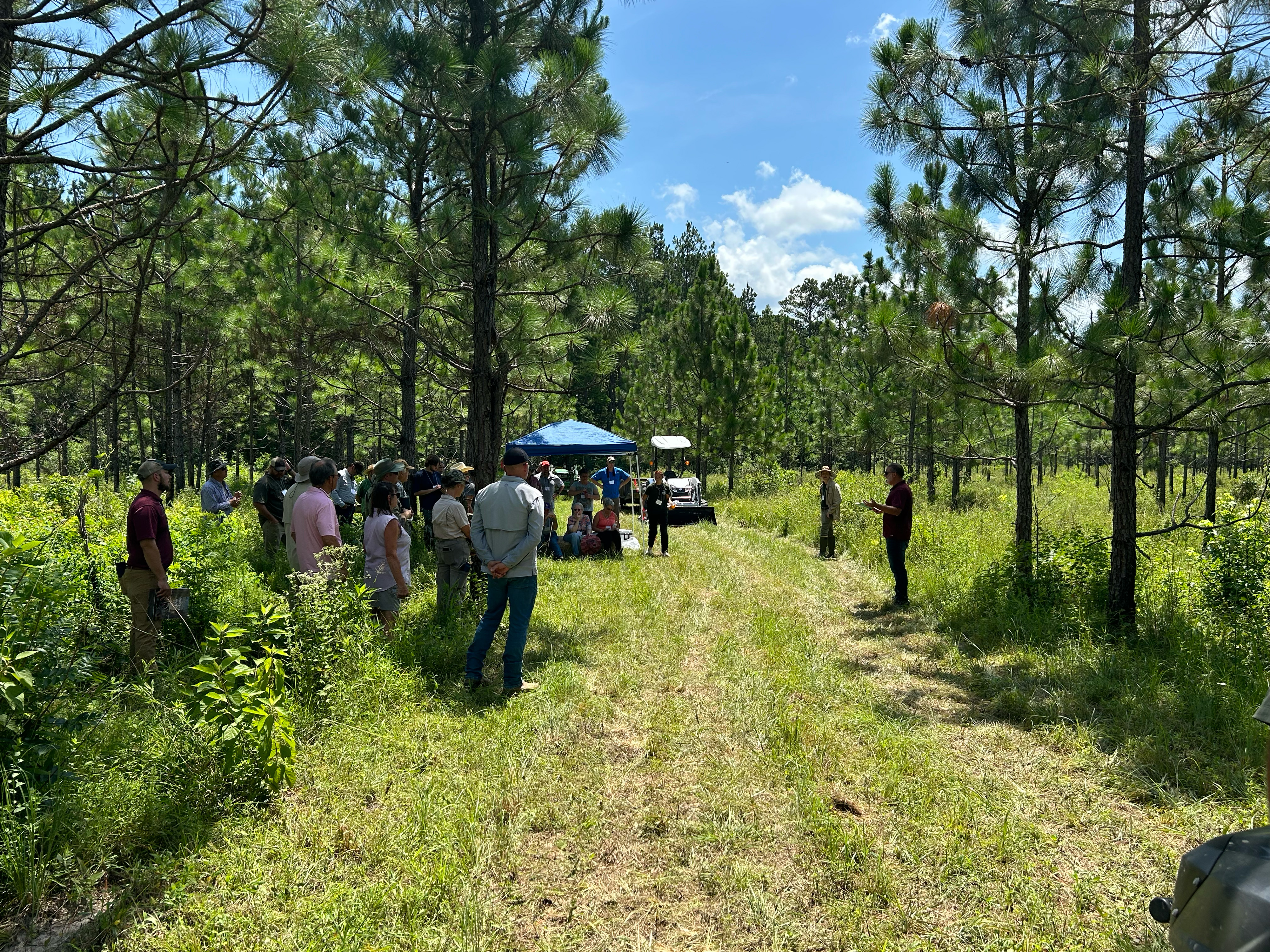Educate and Inspire: NWTF Louisiana Hosts Conservation Field Days to Boost Wildlife Habitat in the Pelican State
EDGEFIELD, S.C. — The NWTF recently hosted two field day workshops at the Marsh Bayou Wildlife Management Area in Evangeline Parish, Louisiana. The WMA is part of the longleaf pine flatwoods region, an extensive and flat area in the west Gulf Coastal Plain in southwest Louisiana and southeast Texas. Longleaf pine habitats are among the most diverse and threatened habitats in North America.
The first field day workshop was specifically for conservation professionals, with the intent to provide attendees with the tools and information they need to help private landowners with longleaf pine restoration. The NWTF invited representatives from the Louisiana Department of Wildlife and Fisheries, the Natural Resources Conservation Service, Texas Longleaf Alliance, The Nature Conservancy, the U.S. Fish and Wildlife Service, the Louisiana Ecological Forestry Center and representatives from Fort Poke U.S. Army base.
“With such a variety of backgrounds, we had active discussions and conversations about longleaf pine restoration and the human dimension of it,” said Dillon King, NWTF forester. “With conservation professionals, we were able to go more in depth about the time and frequency of burns and get a really tailored understanding, so these professionals can use it on public and private property.”

The landowners that attended the second day of the workshop also learned what prescribed fire is used for and why it is beneficial for wild turkey habitats. The event was also a good way for King and his team to see how comfortable people were with fire and where landowners are with utilizing prescribed fire as an accepted management practice in Louisiana, which will allow land managers to gauge where they can supplement more prescribed fire education in the coming years.
“Everyone was very receptive to it, but they do have a healthy respect for fire,” King said. “Fire is overall the best management tool for wild turkey habitat and longleaf pine habitat. It removes woody understory and promotes herbaceous growth. It's important to restore this fire culture in the Southeast, so we can have turkey populations for generations to come.”
Both workshop groups went into the field and saw two sites. The first site was a longleaf pine stand that was planted a few years ago, and the second site was planted 15 years ago. This contrast allowed attendees to see the differences between how the two sites have grown so far, and how they differ in vegetation composition and structure.

In addition to highlighting the use of prescribed fire and its benefits, King and his team also discussed the beneficial management practices, such as tree thinning and proper herbicide treatments.
“We had an indoor portion with the landowners talking about cost-share opportunities and sharing testimonials about the benefits of prescribed fire, tree thinning and herbicide,” King said.
Both events were successful, and the team is already discussing another workshop in the fall, which would allow attendees to see how the vegetative composition and structure changes with the seasons.
About the National Wild Turkey Federation
Since 1973, the National Wild Turkey Federation has invested over half a billion dollars into wildlife conservation and has positively impacted over 24 million acres of critical wildlife habitat. The NWTF has also invested over $10 million into wild turkey research to guide the management of the wild turkey population and to ensure sustainable populations into perpetuity. The organization continues to deliver its mission by working across boundaries on a landscape scale through its Four Shared Values: clean and abundant water, healthy forests and wildlife habitat, resilient communities, and robust recreational opportunities. With the help of its dedicated members, partners and staff, the NWTF continues its work to provide Healthy Habitats. and Healthy Harvests. for future generations.
